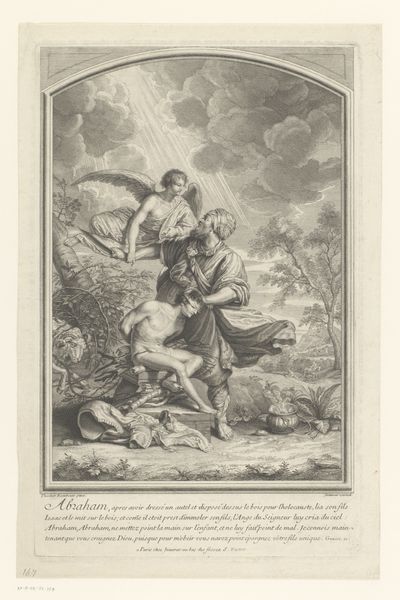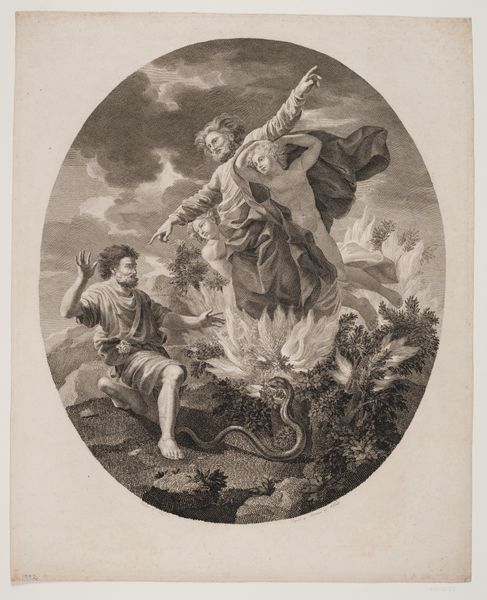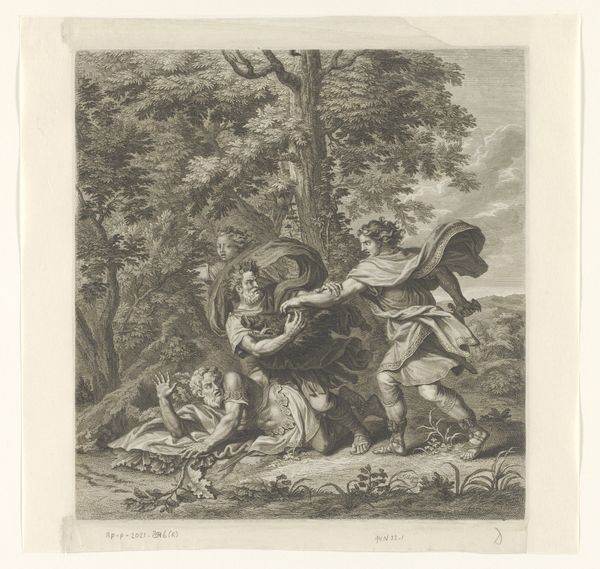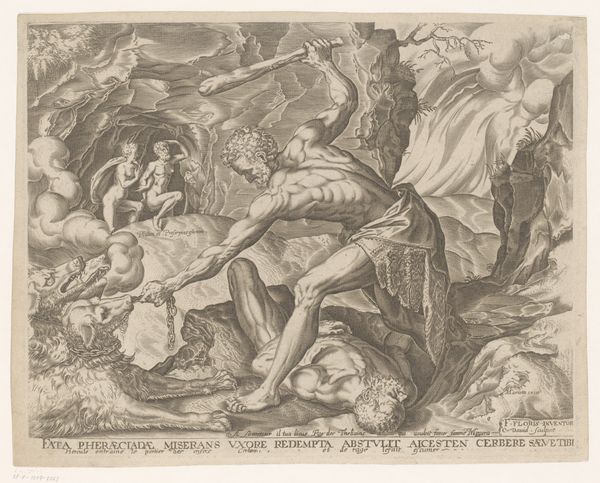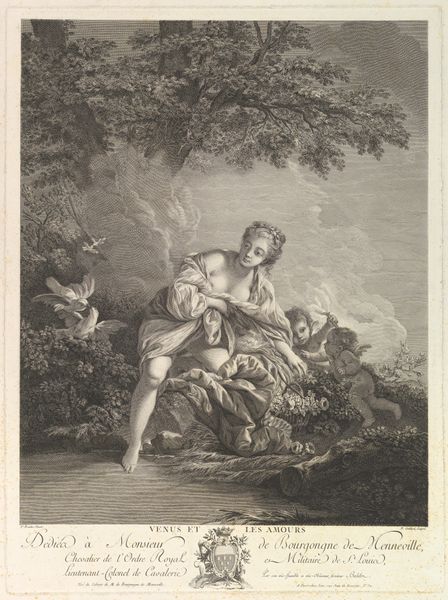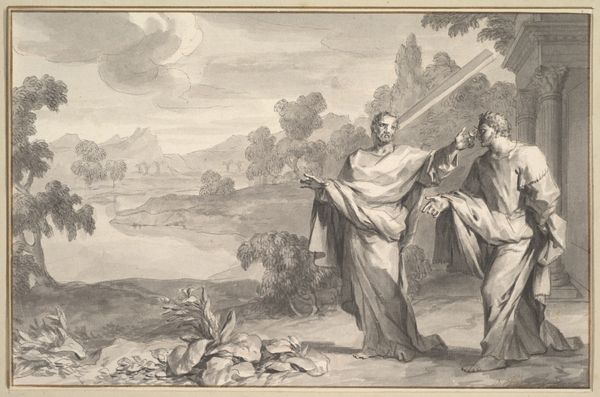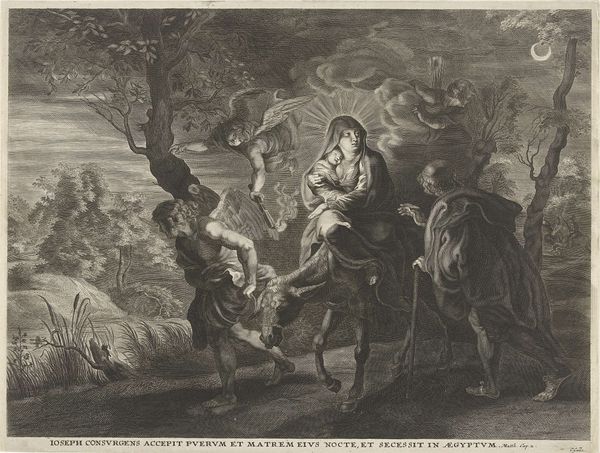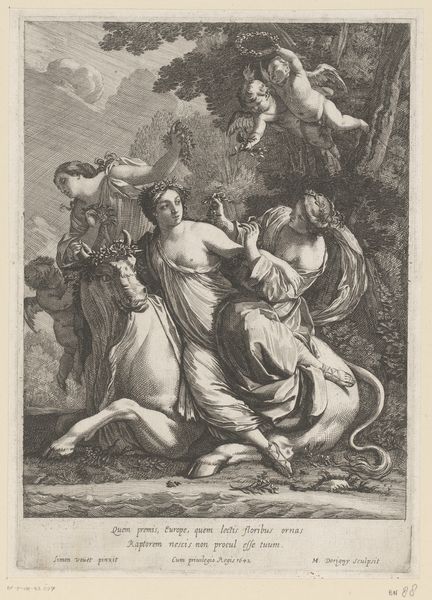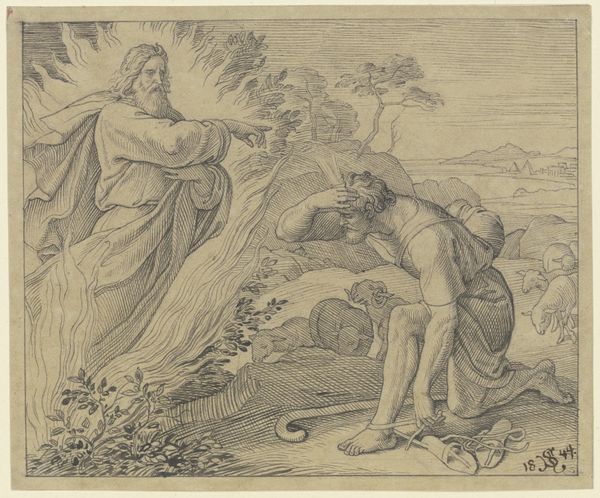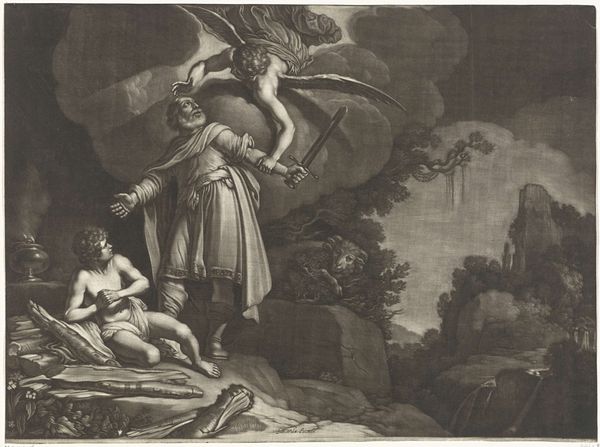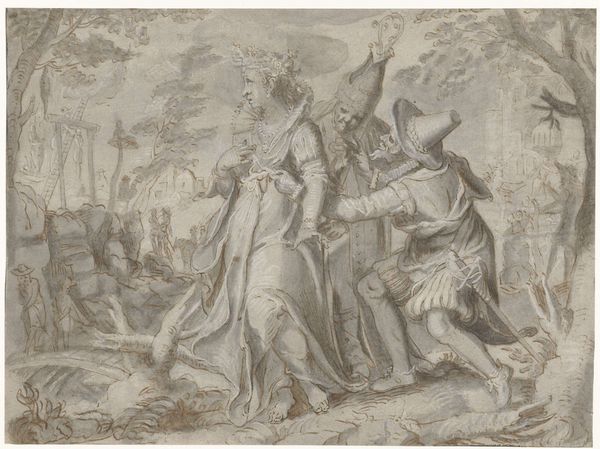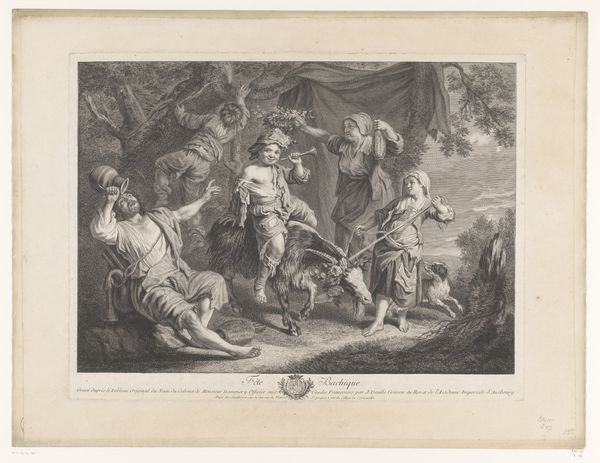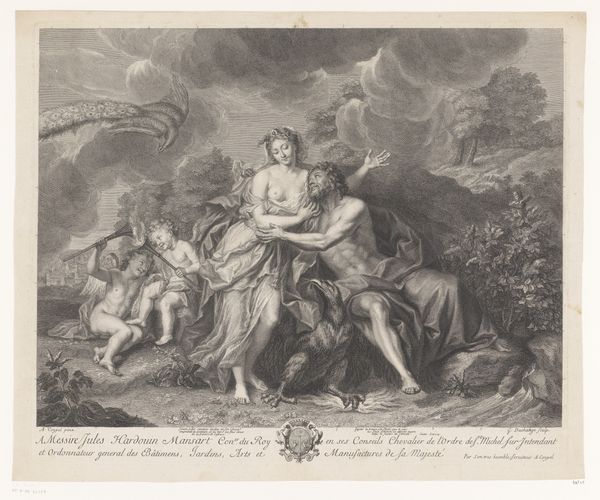
print, engraving
#
baroque
# print
#
caricature
#
figuration
#
history-painting
#
engraving
Dimensions: height 586 mm, width 705 mm
Copyright: Rijks Museum: Open Domain
Editor: This engraving, "Moses and the Burning Bush," dating to around 1650-1683 by De (II) Vernesson, is quite striking. The detail in the rendering of the figures and the fire is really captivating, especially in monochrome. How would you interpret this work from a formalist perspective? Curator: From a formalist lens, we look first at the compositional elements. Consider the dynamic interplay of light and shadow—chiaroscuro—used to model the figures and create a sense of drama. Note the ascending diagonal of the composition, drawing the eye from Moses to the divine figures in the upper register. The meticulousness of the engraving technique also contributes significantly to the overall aesthetic effect. Can you see how the contrasting textures, created through varying densities of lines, add depth and visual interest? Editor: Yes, I notice the difference in texture, especially between the smooth skin of the figures in the sky and the rougher appearance of the bush and landscape. How do the lines around the burning bush differ from those in the sky or the cloak? Curator: Precisely! In the burning bush, the lines are dense and chaotic, evoking the volatile nature of the fire. By contrast, the lines used to depict the divine figures are more fluid and gentle, suggestive of celestial beings. And if you observe closely the drape of Moses' cloak and the cloudscape, what geometries do you observe that help to emphasize his form and role? Editor: They certainly enhance the contrast and three-dimensionality! Considering your approach, does the narrative matter, or is it all about pure form? Curator: While the narrative context isn't disregarded, the primary focus is on how the formal elements communicate meaning. In other words, how does Vernesson use line, composition, and texture to express themes of divine intervention or awe, regardless of the story? It seems apparent, for instance, the intention is to invoke emotion through compositional direction, but is it successful, based purely on a survey of visual cues? Editor: I see. The visual cues certainly give off an essence of transcendence, a certain majesty that one may attribute to Baroque pieces! Curator: Precisely! We've considered how Vernesson creates drama using light and line; I would encourage you to ponder the emotional and intellectual effect through semiotic assessment, perhaps!
Comments
No comments
Be the first to comment and join the conversation on the ultimate creative platform.

